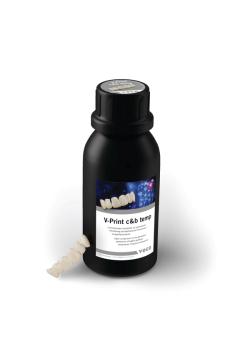Abstract
There is a need for a protective layer to help exposed dental pulp heal, but many of the materials used for this purpose do not offer optimal physical properties. This article takes a look at the advantages and disadvantages of the materials used for pulp capping.
Learning Objectives
- Gain an understanding of the properties desired in an ideal pulp capping material
- Learn the pros and cons of various types of materials used for pulp capping
- Understand the value of considering new material choices
Those of us who have been in practice for more than a few years have recognized the need for, but also the awkwardness of pulp capping materials. For many years, only limited options were available for both indirect or direct techniques.
Throughout the past decade, a new array of products that show great potential for success and ease of use have been introduced, and recently a promising new product has been launched. However, prior to discussing new potential additions to the treatment arsenal, this article will review the ideal properties for a pulp capping material.
Goals of Pulp Capping
Pulp capping promotes the healing of a damaged pulp by creating a barrier over the pulp tissue to allow healing to take place without contamination. If inflammation and infection are present at the site of the treatment, we would ideally expect to see a reduction in both following the pulp cap placement. Providing this barrier of protection is one of the key functions required in a pulp capping material.
Just as important as the barrier is the need for a material that can help stop the decay process and stimulate pulp cells to form new dentin.1,2 With this in mind, bioactivity and biocompatibility are additional desirable properties in a pulp capping material.3
Clearly, those characteristics are key to achieving product success. From a practitioner’s point of view, however, it is equally important to use a material that is easily applied but does not dissolve in the presence of saliva and overlaying restorative materials.
Indirect vs Direct Pulp Caps
The pulp capping agents discussed in this article can be used for indirect and direct pulp caps.
Indirect pulp caps
These are placed over very deep cavity preparations without pulp exposure. They are applied over noncarious dentin or dentin with some remaining caries. Historically, indirect pulp caps have been treated as either 2-step or single-step procedures.
Direct pulp caps
In this case, pulp capping agents are placed directly over pulp tissue that is exposed due to decay, trauma, or mechanical damage.
The success of both techniques depends on the patient’s pretreatment condition. The state of pulp vitality, the amount of pulpal necrosis, and related periapical damage can all impact the outcomes of placing a pulp capping material.1
The Evolution of Pulp Capping Products
Calcium hydroxide (Dycal; Dentsply Sirona)
Throughout many decades, calcium hydroxide was the predominant means of pulp capping for both direct and indirect procedures. Because it has been used so long, it is the most thoroughly researched pulp capping material.
During use, it dissociates into calcium and hydroxide ions. It has a high pH as well as antibacterial properties.3 However, it also has negative characteristics, including high solubility, lack of adhesion to the dentin, and poor physical properties.4 Many of us have frustratingly witnessed the material leaching off the tooth immediately after completing the next step in the clinical workflow.
Mineral trioxide aggregate (MTA)
MTA is derived from Portland cement. It was originally used as a root end sealer and as a repair material for root canal perforations.1 It improves upon the properties of calcium hydroxide by adding biocompatibility to the pulp exposure, better sealing to keep out contaminants, and lower solubility. It also may reduce levels of pulp inflammation, hyperemia, and necrosis.5
Calcium in MTA reacts with phosphates in oral tissue to form hydroxyapatite, which helps create a seal and adds to the material’s biocompatibility. Success rates for carious and mechanical exposure have been shown to be 80% and 84%, respectively. MTA has been proven to be more successful in primary teeth as a pulpotomy agent than formocresol and other sealing materials.4
One of the major drawbacks of using MTA as a pulp capping agent is its extraordinarily long setting time, which can be as long as 2 to 4 hours.6 Newer formulations for pulp capping materials featuring MTA often add other materials to help reduce the setting time.
Calcium silicate (Biodentine; Septodont)
Calcium silicate includes much of the Portland cement formula of MTA but adds tricalcium silicate to provide the material with enhanced physicomechanical properties.3 The material must be prepared in a triturator prior to placement. It can be used as a dentin substitute under composite restorations and has demonstrated positive results in direct pulp cap procedures.7 Perhaps, the main drawback of this material can also be considered a benefit: The setting time has been reduced to 10 to 15 minutes with this calcium silicate/MTA formulation. Although this is clearly an improvement vs MTA on its own, it is still a relatively long time to wait before completing a restoration.
Resin-modified calcium silicate (TheraCal LC; Bisco Inc)
TheraCal LC has become one of the most popular pulp capping materials over the past decade. The resin-based formula has taken many of the advantages of MTA but added light curing technology, which creates a setting time measured in seconds rather than hours or minutes like the previously available pulp capping materials. TheraCal LC is a calcium silicate product like Biodentine but with a modified powder composition and particle size. It is a fourth-generation calcium silicate material.8 Additionally, TheraCal LC has been shown to release calcium ions in concentrations that can stimulate the pulp and odontoblasts to reform healthy tissue.9
Although the properties of these materials have improved, studies have shown similar results when comparing effectively capping the pulp with TheraCal LC, Biodentine, and MTA.10 Further long-term studies of the latest materials will be necessary to determine a clear winner.
Figures 1-3: In a deep cavity prep or over exposed dental pulp, the goal of a pulp capping procedure is to prevent further infection and promote healing. Resin-modified bioceramic, Ceramir Protect (Directa), was used in pulp capping Figures 1-3. It provided a tight seal that was not disturbed when selective etch, universal bonding agents, and composite restorations were place over the material. It has now become easier and faster to apply and protect pulp capping agents and allow the healing process to take place.
Figures 1-3: In a deep cavity prep or over exposed dental pulp, the goal of a pulp capping procedure is to prevent further infection and promote healing. Resin-modified bioceramic, Ceramir Protect (Directa), was used in pulp capping Figures 1-3. It provided a tight seal that was not disturbed when selective etch, universal bonding agents, and composite restorations were place over the material. It has now become easier and faster to apply and protect pulp capping agents and allow the healing process to take place.
Figures 1-3: In a deep cavity prep or over exposed dental pulp, the goal of a pulp capping procedure is to prevent further infection and promote healing. Resin-modified bioceramic, Ceramir Protect (Directa), was used in pulp capping Figures 1-3. It provided a tight seal that was not disturbed when selective etch, universal bonding agents, and composite restorations were place over the material. It has now become easier and faster to apply and protect pulp capping agents and allow the healing process to take place.
Resin-modified bioceramic (Ceramir Protect LC; Directa Dental Group)
Ceramir Protect LC, the newest Ceramir bioactive product, answers several problems that have plagued past pulp capping agents. As with other bioactive products, it dissolves and recrystallizes into nanocrystalline hydrates and creates a unique bond between the material and the tooth. This resin-modified bioceramic is useful for direct and indirect pulp capping. The product releases calcium, which helps stimulate the formation of hydroxyapatite and tertiary dentin.
The benefits of this new product include:
- a highly alkaline pH that repels bacteria and creates an environment conducive to healing and hostile to bacteria;
- moisture tolerance and thixotropy, which reduce the tendency of materials to dissolve on contact with bonding agents and saliva;
- light curing for efficient placement and radiopacity for easier visibility on radiographs; and
- twice as much calcium release as competing products.
Although previous improvements in pulp capping materials enhanced the biocompatibility and setting times for working with them, one issue continues to make most pulp capping materials less than optimal: Regardless of their classification and composition, pulp capping agents tend to exhibit an ineffectiveness at attaching to dentin, as well as the potential to debond from the dentin when a moist material is placed over the pulp capping material.
The modified ceramic resin formulation of Ceramir Protect LC seems to act as more of a “sealer” than previous pulp capping materials, and in the author’s experience, this type of material provides an extremely strong bond to the dentin that holds regardless of what is underneath and whatever material is placed over the top of the cap.
As with most categories of dental materials, newer pulp capping materials offer improvements vs previous generations. Although research shows similar effectiveness among materials at capping the pulp, newer materials are faster to place and improve on other physical and biocompatible properties.
With its high calcium release, hydroxyapatite creation, and ability to stay where it is placed, a bioceramic resin like Ceramir Protect LC is another step in this evolution toward making pulp capping procedures more effective and efficient.
References
- Alex G. Direct and indirect pulp capping: a brief history, material innovations, and clinical case report. Compend Contin Educ Dent. 2018;39(3):182-189.
- Islam R, Islam MRR, Tanaka T, Alam MK, Ahmed HMA, Sano H. Direct pulp capping procedures - evidence and practice. Jpn Dent Sci Rev. 2023;59:48-61. doi:10.1016/j.jdsr.2023.02.002
- da Rosa WLO, Cocco AR, Silva TMD, et al. Current trends and future perspectives of dental pulp capping materials: A systematic review. J Biomed Mater Res B Appl Biomater. 2018;106(3):1358-1368. doi:10.1002/jbm.b.33934
- Nair PNR, Duncan HF, Pitt Ford TR, Luder HU. Histological, ultrastructural and quantitative investigations on the response of healthy human pulps to experimental capping with mineral trioxide aggregate: a randomized controlled trial. Int Endod J. 2008;41(2):128-150. doi:10.1111/j.1365-2591.2007.01329.x
- Marques MS, Wesselink PR, Shemesh H. Outcome of direct pulp capping with mineral trioxide aggregate: a prospective study. J Endod. 2015;41(7):1026-1031. doi:10.1016/j.joen.2015.02.024
- Tomson PL, Grover LM, Lumley PJ, Sloan AJ, Smith AJ, Cooper PR. Dissolution of bio-active dentine matrix components by mineral trioxide aggregate. J Dent. 2007;35(8):636-642. doi:10.1016/j.jdent.2007.04.008
- Stringhini Junior E, Vitcel ME, Oliveira LB. Evidence of pulpotomy in primary teeth comparing MTA, calcium hydroxide, ferric sulphate and electrosurgery with formocresol. Eur Arch Paediatr Dent. 2015;16(4):303-312. doi:10.1007/s40368-015-0174-z
- Mente J, Hufnagel S, Leo M, et al. Treatment outcome of mineral trioxide aggregate or calcium hydroxide direct pulp capping: long-term results. J Endod. 2014;40(11):1746-1751. doi:10.1016/j.joen.2014.07.019
- Formosa LM, Mallia B, Camilleri J. The effect of curing conditions on the physical properties of tricalcium silicate cement for use as a dental biomaterial. Int Endod J. 2012;45(4):326-336. doi:10.1111/j.1365-2591.2011.01980.x
- Strassler HE, Levin R. Biodentine tricalcium-silicate cement. Inside Dentistry. 2011;7(10):98-100. Accessed June 8, 2023. https://www.aegisdentalnetwork.com/id/2011/11/biodentine-tricalcium-silicate-cement






